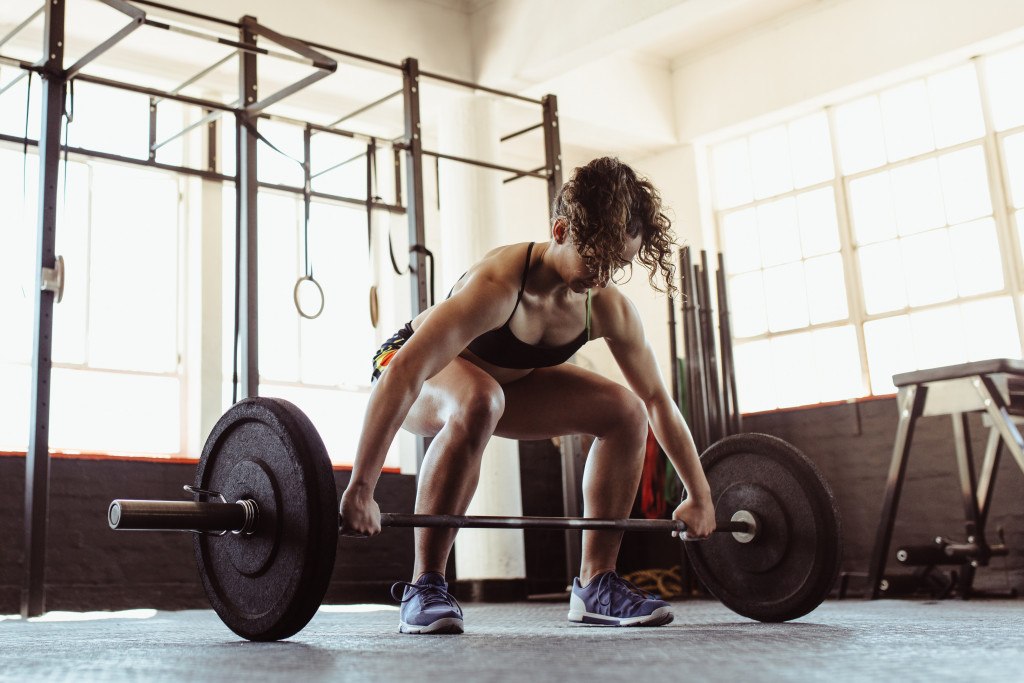9 Mistakes You’re Probably Making While Lifting Weights
Strength training is important, but lifting weights incorrectly is a good way to hurt yourself. Here the mistakes Philly trainers spot most often.

Photograph by iStock/jacoblund
We all know spin class alone doesn’t cut it — we need strength training to go along with our cardio. But the thing is, even if we go to the gym, have a workout planned, and put in the work, there are plenty of mistakes we can make along the way that can lead to either not-as-effective workouts — or worse, injury.
Related: How to Get Over Your Fear of the Gym Weight Room
Since you don’t have time for either of those things, we reached out to Philly fitness trainers for the mistakes they see clients making most often. Here’s what they had to say — and what you can avoid doing in the future.
Holding Your Breath
“[One issue is] improper breathing technique — holding the breath in to a point they get light headed. Especially when lifting ‘heavy,’ this happens most likely subconsciously, since the client is focused on executing the lift. Part of our job [as trainers] is to remind them to breathe, that way their muscles have the energy/oxygen to operate at maximum capacity.” — Osayi Osunde, founder of Fit Academy
Getting Distracted
“If you’re really pushing yourself, lifting weight shouldn’t simply be an autonomous movement — there are a lot of systems in our bodies that need to operate cohesively. Try to focus on your form, your breathing, and which muscles/areas of your body you feel firing to help you lift and control the weight. Our bodies are excellent at providing feedback, and paying attention to it will pay dividends.” — Greg Ferrara, coach at OpenBox Athletics
Loading Up the Weight Before You’ve Perfected Your Form
“Form good training habits and the load will increase as your technique gets better. Loading too much weight on the bar when your musculoskeletal system and central nervous system are not prepared for it could be very dangerous and put you on the bench.” — Nicholas Pasquariello, founder of Cedar Street Barbell
Rounding Your Spine During Deadlifts
“Tight hamstrings, a weak core, and a loose upper back can lead to a rounded spine in the deadlift setup. This improper set up can be corrected by starting with your weights on an elevating surface. With the weights higher up, you can more easily reach down with a straight spine, forcing your glutes, hamstrings and upperback to pull the weight, rather than the more vulnerable muscles of the low back.” — Katie Gould, founder of KG Strong
Jerking the Weights
“The most effective way to train is to control the weight—the weight shouldn’t control you. When you have to jerk the weight, you’re likely jerking other muscles as well. This can lead to strain and injury, with the muscles of the back being particularly weak.” — Robyn Weisman, founder of Results by RW Fitness
Knees Coming Too Far Forward During Squats
“Correct knee positioning during squatting or jumping can prevent any onset of pain. Weight should sit back in the client’s heels and their knees should stay behind the toes.” — Joe Zarett of Zarett Rehab & Fitness
Rushing Your Repetitions
“Unless you’re performing certain exercises where speed is key (for example, the Jerk in the Clean & Jerk), you’re missing out on muscular gains and likely to be flirting with poor form. Try to establish a tempo for each of your reps. For example: When performing back squats, you may want to pace your reps so that you are taking three seconds to descend into the squat, spending one second in the squat position, and taking two seconds to come back up out of the squat.” — Greg Ferrara, coach at OpenBox Athletics
Squatting During Your Kettlebell Swings
“The hardstyle kettlebell swing is a hip hinge, not a squat pattern. This means that the hips should reach back, the knees should bend minimally, and the shins should stay vertical. If you squat the kettlebell, you are likely dropping the bell below the knees, putting strain on the low back, and underutilizing or missing completely the power of the hips. When you swing the kettlebell, hike it way back between the upper inner thighs, don’t sweep the floor! At the top of the swing, hold longer than you think you need to before you break the hips and hinge.” — Katie Gould, founder of KG Strong
Not Adjusting the Machines to Your Frame
“Most exercise equipment is designed to fit a wide range of body types and sizes. It is important to take the time to adjust each machine to your body’s needs. Using improper adjusted machines will lead to less than optimal results and increase your risk of injury.” — Robyn Weisman, founder of Results by RW Fitness
Like what you’re reading? Stay in touch with Be Well Philly—here’s how:
- Like Be Well Philly on Facebook
- Follow Be Well Philly on Instagram
- Get the Be Well Philly Newsletter
- Follow Be Well Philly on Twitter


